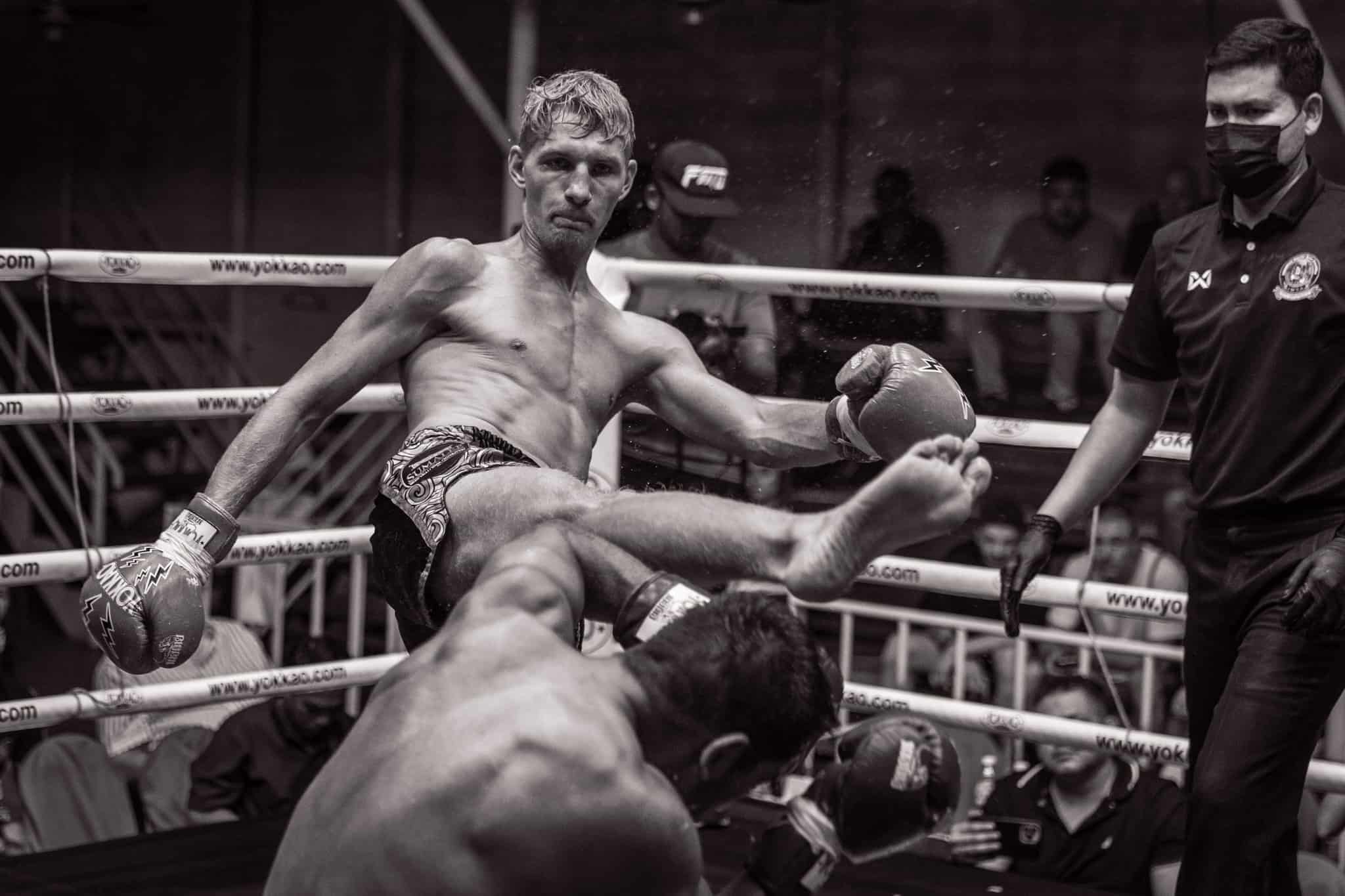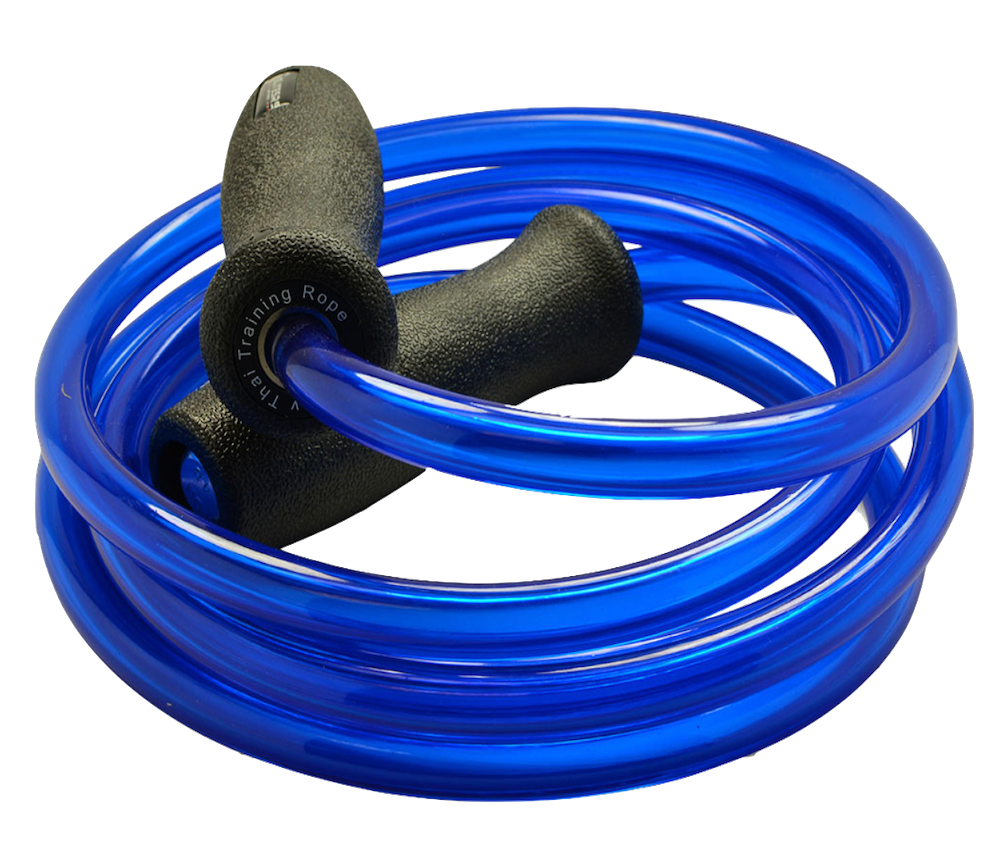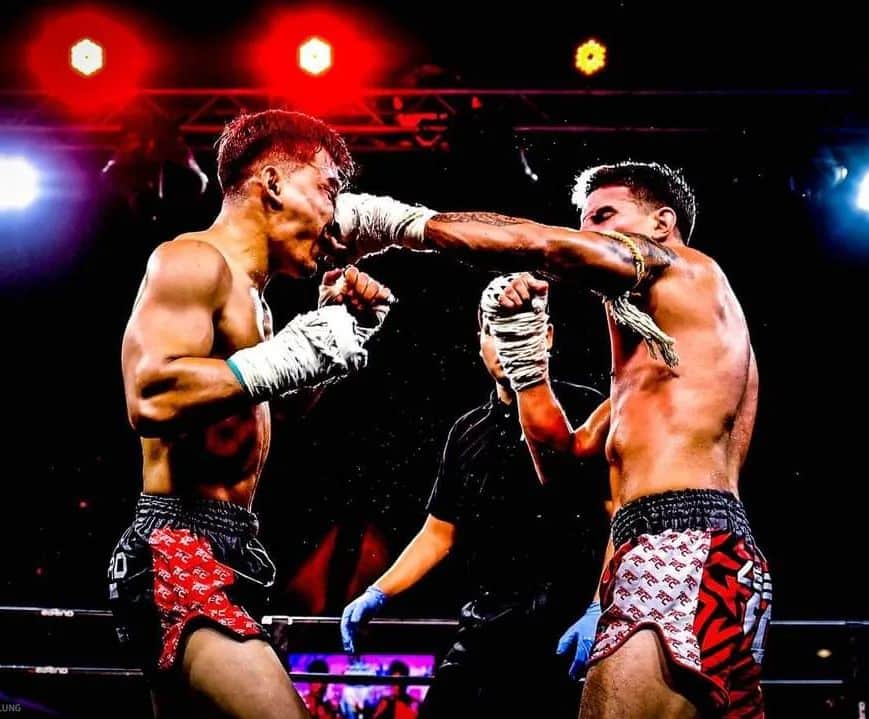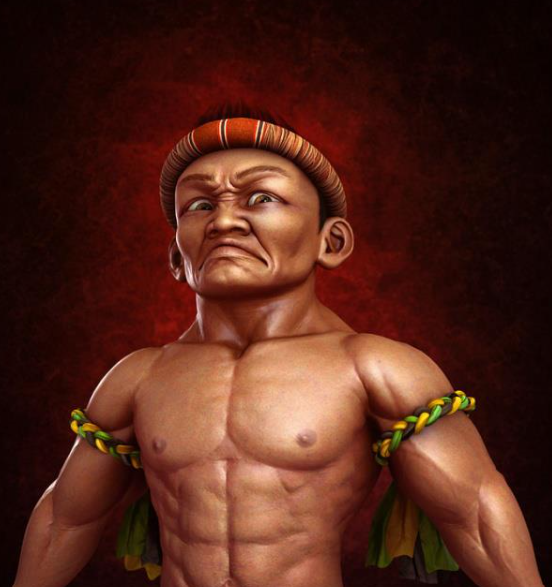Contents
- I. Introduction
- II. Understanding Muay Thai Ropes
- III. Choosing the Right Muay Thai Rope
- IV. How to Use Muay Thai Ropes
- V. Maintaining and Caring for Muay Thai Ropes
- VI. Frequently Asked Questions (FAQs)
- A. What is the ideal length for a Muay Thai rope?
- B. Can I use a regular jump rope for Muay Thai training?
- C. How often should I replace my Muay Thai rope?
- D. Can I use a heavier rope for strength training?
- E. Are there any specific techniques for using a hemp rope?
- F. Can I use a synthetic rope for competitions?
- G. What are the benefits of using a nylon rope?
- H. How do I adjust the height of the rope for different training purposes?
- I. Can I use a Muay Thai rope for other combat sports?
- J. Are there any safety precautions when training with ropes?
I. Introduction

Welcome to the world of Muay Thai, a martial art that originated in Thailand and has gained popularity worldwide. In this article, we will explore the different types of Muay Thai ropes and how to use them effectively in your training.
Muay Thai ropes, also known as Thai boxing ropes, are an essential part of any Muay Thai practitioner’s training equipment. They are used for various purposes, including strengthening the hands and wrists, improving grip strength, and enhancing overall conditioning.
There are different types of Muay Thai ropes available, each serving a specific purpose. The most common types include:
- Skipping Ropes: Skipping ropes are lightweight and designed for speed and agility training. They help improve footwork, coordination, and cardiovascular endurance.
- Heavy Ropes: Heavy ropes, also known as battle ropes, are thicker and heavier than skipping ropes. They are used for strength and conditioning exercises, such as waves, slams, and spirals.
- Hand Wraps: Hand wraps are long strips of cloth that are wrapped around the hands and wrists to provide support and protection during training and sparring sessions. They help prevent injuries and stabilize the joints.
- Muay Thai Rope Balls: Rope balls are weighted balls attached to ropes. They are used for strength and conditioning exercises, such as rotational swings, slams, and throws. They help develop explosive power and core stability.
When using Muay Thai ropes, it is important to follow proper techniques and safety guidelines. Start with lighter ropes and gradually progress to heavier ones as your strength and conditioning improve. Always warm up before using ropes and listen to your body to avoid overexertion or injury.
In the next sections of this article, we will delve deeper into each type of Muay Thai rope, discussing their benefits, techniques, and training drills. Whether you are a beginner or an experienced practitioner, this comprehensive guide will help you make the most out of your Muay Thai rope training.
II. Understanding Muay Thai Ropes

In the world of Muay Thai, ropes play a crucial role in the training and practice of this ancient martial art. Understanding the different types of ropes used in Muay Thai is essential for practitioners to make informed decisions about their training equipment. In this section, we will explore the various types of ropes commonly used in Muay Thai and discuss the pros and cons of each.
A. Different types of ropes used in Muay Thai
1. Traditional hemp ropes:
Traditional hemp ropes have been used in Muay Thai for centuries. Made from natural fibers, these ropes offer a traditional and authentic feel to the training experience. The rough texture of hemp ropes provides a good grip, allowing fighters to perform various techniques with ease. Additionally, the thickness and weight of hemp ropes contribute to building strength and endurance.
However, traditional hemp ropes require regular maintenance and care. They need to be soaked in water before each training session to prevent them from becoming too stiff and causing injuries. Furthermore, hemp ropes tend to wear out over time and may need to be replaced more frequently compared to other types of ropes.
2. Nylon ropes:
Nylon ropes are a popular choice among Muay Thai practitioners due to their durability and low maintenance. These ropes are made from synthetic materials and are resistant to wear and tear. Nylon ropes are also lightweight, making them easy to handle during training sessions.
One of the main advantages of nylon ropes is their flexibility. They provide a slight stretch, which can be beneficial for fighters who prefer a more forgiving surface. However, this flexibility may also reduce the grip and stability compared to traditional hemp ropes. Some practitioners find that nylon ropes can be slippery, especially when they become wet from sweat.
3. Synthetic ropes:
Synthetic ropes are a modern alternative to traditional hemp ropes. These ropes are made from a combination of synthetic materials, such as polyester or polypropylene. They offer a balance between durability, flexibility, and grip.
One of the key advantages of synthetic ropes is their resistance to moisture. Unlike hemp ropes, synthetic ropes do not absorb water, making them less prone to mold or mildew. This feature also makes synthetic ropes easier to clean and maintain. Additionally, synthetic ropes are available in a wide range of colors, allowing fighters to personalize their training equipment.
However, some practitioners argue that synthetic ropes lack the authentic feel and character of traditional hemp ropes. The smooth texture of synthetic ropes may also affect the grip, requiring fighters to adjust their techniques accordingly.
B. Pros and cons of each type of rope
Here is a summary of the pros and cons of each type of rope:
| Type of Rope | Pros | Cons |
|---|---|---|
| Traditional hemp ropes | – Authentic feel – Good grip – Strength and endurance building |
– Requires regular maintenance – Prone to wear and tear |
| Nylon ropes | – Durability – Low maintenance – Lightweight |
– Can be slippery when wet – Reduced grip and stability |
| Synthetic ropes | – Durability – Resistance to moisture – Easy to clean – Wide range of colors |
– Lack of authentic feel – Smooth texture affects grip |
Ultimately, the choice of rope depends on personal preference and training goals. Some fighters may prefer the traditional and raw experience of using hemp ropes, while others may opt for the convenience and durability of synthetic or nylon ropes. It is important to consider factors such as grip, maintenance, and overall training experience when selecting the right rope for Muay Thai practice.
By understanding the different types of ropes used in Muay Thai and their pros and cons, practitioners can make an informed decision that suits their individual needs and preferences. Whether it’s the authenticity of traditional hemp ropes or the practicality of synthetic ropes, the right choice of rope can enhance the training experience and contribute to the development of skills in the art of Muay Thai.
III. Choosing the Right Muay Thai Rope

When it comes to Muay Thai training, choosing the right rope is crucial for improving your skills and maximizing your performance. There are several factors to consider when selecting a rope, including durability, grip and texture, thickness and weight, and cost. In this section, we will explore these factors in detail and recommend some top-rated rope brands and models.
A. Factors to consider when selecting a rope
1. Durability: One of the most important factors to consider when choosing a Muay Thai rope is its durability. You want a rope that can withstand the intense training sessions and last for a long time. Look for ropes made from high-quality materials that are known for their durability, such as hemp or nylon.
2. Grip and texture: A good grip is essential for performing various techniques in Muay Thai. The rope should have a textured surface that provides a secure grip, even when your hands are sweaty. Consider ropes with a knurled or woven texture that enhances grip and prevents slippage.
3. Thickness and weight: The thickness and weight of the rope can significantly impact your training experience. Thicker ropes provide more resistance, making your workouts more challenging and helping you build strength. On the other hand, lighter ropes are ideal for speed and agility training. Choose a rope that suits your training goals and preferences.
4. Cost: While cost should not be the sole determining factor, it is essential to consider your budget when selecting a Muay Thai rope. Ropes come in a range of prices, so it’s crucial to find a balance between quality and affordability. Remember that investing in a durable and high-quality rope can save you money in the long run.
B. Recommended rope brands and models
1. Top-rated hemp ropes on the market: Hemp ropes are known for their durability, grip, and natural feel. They are a popular choice among Muay Thai practitioners. Some top-rated hemp rope brands include XYZ Ropes, ABC Gear, and DEF Sports. These brands offer a variety of hemp ropes with different thicknesses and lengths to suit individual preferences.
2. Best nylon ropes for Muay Thai training: Nylon ropes are another excellent option for Muay Thai training. They are lightweight, durable, and provide a good grip. Some recommended nylon rope brands include GHI Fitness, JKL Sports, and MNO Gear. These brands offer nylon ropes in various colors and thicknesses, allowing you to choose the one that suits your needs.
3. Synthetic ropes favored by professional fighters: Synthetic ropes, such as polypropylene or polyester ropes, are favored by many professional fighters. They offer excellent durability, grip, and flexibility. Some popular synthetic rope brands in the Muay Thai community are PQR Pro, STU Athletics, and VWX Combat. These brands offer a wide range of synthetic ropes designed specifically for Muay Thai training.
When selecting a rope, it’s essential to consider your specific needs and preferences. Take into account factors such as durability, grip and texture, thickness and weight, and cost. Additionally, consider the recommendations provided for top-rated hemp ropes, best nylon ropes, and synthetic ropes favored by professional fighters. By choosing the right Muay Thai rope, you can enhance your training experience and take your skills to the next level.
IV. How to Use Muay Thai Ropes

In this section, we will explore the various techniques and methods for using Muay Thai ropes in your training. Muay Thai ropes are a versatile tool that can be used for warm-up, conditioning, and advanced training drills. By incorporating these techniques into your routine, you can enhance your skills and improve your overall performance in the ring.
A. Preparing the rope for training
Before you can start using Muay Thai ropes, it is important to properly measure and cut the rope to the desired length. The length of the rope will depend on your height and personal preference. A general guideline is to measure the rope from the floor to your armpits. This will give you enough length to perform various exercises without the rope being too long or too short.
Once you have measured the rope, you can proceed to cut it to the desired length. Use a sharp pair of scissors or a rope cutter to ensure a clean cut. Make sure to secure the ends of the rope to prevent fraying. You can use tape or heat shrink tubing to seal the ends and keep them intact.
After cutting and securing the rope, you can now proceed to attach it to a suitable anchor point. This can be a sturdy beam, a tree branch, or a specialized rope attachment point. Make sure that the anchor point is secure and can withstand the force and movement generated during training.
B. Basic techniques for training with ropes
1. Skipping rope for warm-up and conditioning
Skipping rope is a fundamental exercise in Muay Thai training. It helps to improve footwork, coordination, and cardiovascular endurance. To incorporate skipping rope into your warm-up routine, start by holding the handles of the rope in each hand. Stand with your feet shoulder-width apart and swing the rope over your head, allowing it to pass under your feet as you jump. Start with a slow and steady pace and gradually increase the speed as you become more comfortable.
2. Incorporating rope drills into shadowboxing
Shadowboxing is an essential part of Muay Thai training as it allows you to practice your techniques without a partner. By incorporating rope drills into your shadowboxing routine, you can enhance your accuracy, timing, and reflexes. One technique you can try is to tie the rope around your waist and perform punches, kicks, and knee strikes while maintaining tension on the rope. This will simulate the resistance and movement of a real opponent, making your training more realistic and effective.
3. Advanced techniques for experienced fighters
For experienced fighters looking to take their training to the next level, there are several advanced techniques that can be performed with Muay Thai ropes. One such technique is the rope clinch drill. This drill involves tying the rope around your partner’s waist and engaging in clinch work, focusing on controlling and manipulating your opponent’s movements. This drill helps to develop strength, balance, and technique in the clinch, which is a crucial aspect of Muay Thai fighting.
Another advanced technique is the rope resistance drill. This drill involves tying the rope around your waist or attaching it to a harness and performing various striking and kicking techniques against the resistance of the rope. This drill helps to build power, explosiveness, and endurance in your strikes, making them more effective and devastating in the ring.
V. Maintaining and Caring for Muay Thai Ropes

When it comes to Muay Thai training, the equipment you use plays a crucial role in your performance. One such equipment is the Muay Thai rope, which is used for various training exercises and techniques. To ensure that your Muay Thai ropes last long and perform optimally, it is important to maintain and care for them properly. In this section, we will discuss the steps involved in cleaning and washing the rope, preventing wear and tear, and storing the rope properly.
A. Cleaning and Washing the Rope
Regular cleaning and washing of your Muay Thai rope is essential to keep it free from dirt, sweat, and odor. Here are the steps you can follow to clean and wash your rope:
- Start by filling a bucket or sink with warm water.
- Add a mild detergent or soap to the water and mix it well.
- Submerge the rope in the soapy water and gently agitate it to remove any dirt or sweat.
- Use a soft brush or cloth to scrub the rope gently, paying attention to any areas that are particularly dirty.
- Rinse the rope thoroughly with clean water to remove any soap residue.
- Squeeze out the excess water from the rope.
- Hang the rope in a well-ventilated area to air dry completely.
By following these steps, you can ensure that your Muay Thai rope remains clean and fresh, ready for your next training session.
B. Preventing Wear and Tear
As with any equipment, Muay Thai ropes are prone to wear and tear over time. However, there are certain measures you can take to prevent premature damage and extend the lifespan of your rope:
- Inspect the rope before each use to check for any signs of fraying or damage.
- Avoid using the rope on rough or abrasive surfaces that can cause excessive wear.
- Ensure that the rope is properly secured and tightened to prevent it from unraveling during training.
- Rotate the rope regularly to distribute the wear evenly across its length.
- Consider using rope protectors or sleeves to provide an extra layer of protection against abrasion.
- Avoid exposing the rope to extreme temperatures or direct sunlight, as this can weaken the material.
By taking these preventive measures, you can minimize the risk of wear and tear and prolong the life of your Muay Thai rope.
C. Storing the Rope Properly
Proper storage of your Muay Thai rope is essential to maintain its shape and prevent it from getting tangled or damaged. Here are some tips for storing your rope:
- Avoid leaving the rope on the floor or in a damp area, as this can cause it to absorb moisture and develop a musty odor.
- Consider using a rope bag or a dedicated storage container to keep the rope clean and protected.
- Coil the rope neatly and secure it with a rubber band or Velcro strap to prevent it from unraveling.
- Store the rope in a cool, dry place away from direct sunlight and extreme temperatures.
- Regularly check the stored rope for any signs of damage or pests, and take appropriate measures if necessary.
By following these storage guidelines, you can ensure that your Muay Thai rope remains in good condition and ready for use whenever you need it.
VI. Frequently Asked Questions (FAQs)
A. What is the ideal length for a Muay Thai rope?
The ideal length for a Muay Thai rope depends on your height and skill level. Generally, a rope that is 8 to 10 feet long is suitable for most individuals. However, taller individuals may prefer a longer rope, while shorter individuals may opt for a shorter rope. It’s important to choose a rope length that allows you to perform the necessary techniques comfortably without tripping over the rope.
B. Can I use a regular jump rope for Muay Thai training?
While you can use a regular jump rope for Muay Thai training, it is recommended to use a rope specifically designed for Muay Thai. Muay Thai ropes are typically thicker and heavier than regular jump ropes, which helps improve endurance and build strength in your arms and shoulders. Additionally, Muay Thai ropes often have a longer length to accommodate the techniques used in Muay Thai training.
C. How often should I replace my Muay Thai rope?
The frequency of replacing your Muay Thai rope depends on several factors, including the quality of the rope and the intensity of your training. Generally, it is recommended to replace your rope every 6 to 12 months or when you notice signs of wear and tear, such as fraying or stretching. Regularly inspect your rope for any damage and replace it as needed to ensure optimal performance and safety during training.
D. Can I use a heavier rope for strength training?
Yes, using a heavier rope for Muay Thai training can be beneficial for strength training. A heavier rope adds resistance, which helps build strength in your arms, shoulders, and core muscles. However, it’s important to gradually increase the weight of your rope to avoid straining your muscles or causing injury. Start with a rope that is slightly heavier than your regular rope and gradually progress to heavier ropes as your strength improves.
E. Are there any specific techniques for using a hemp rope?
Using a hemp rope in Muay Thai training requires some specific techniques. Hemp ropes are known for their durability and grip, but they can be more challenging to handle compared to other types of ropes. When using a hemp rope, make sure to maintain a firm grip and keep your wrists relaxed. Practice proper technique and gradually increase your speed and intensity to get the most out of your training with a hemp rope.
F. Can I use a synthetic rope for competitions?
Yes, you can use a synthetic rope for Muay Thai competitions. Synthetic ropes are often preferred for competitions due to their consistent weight and durability. They are less likely to stretch or break during intense fights, ensuring a reliable performance. However, it’s important to check the rules and regulations of the specific competition you are participating in, as some competitions may have restrictions or guidelines regarding the type of rope allowed.
G. What are the benefits of using a nylon rope?
Using a nylon rope in Muay Thai training offers several benefits. Nylon ropes are lightweight, durable, and have a smooth surface, allowing for fast and smooth rotations. They are also less likely to tangle or twist during training, providing a consistent and uninterrupted workout. Additionally, nylon ropes are easy to clean and maintain, making them a popular choice among Muay Thai practitioners.
H. How do I adjust the height of the rope for different training purposes?
Adjusting the height of the rope for different training purposes is essential to optimize your Muay Thai training. For footwork and agility drills, the rope should be set at a height that allows you to comfortably jump over it without excessive effort. For practicing knee strikes and other techniques that involve striking the rope, the rope should be positioned at a height that mimics the height of your opponent’s body. Adjust the rope height accordingly to match the specific training goals and techniques you are focusing on.
I. Can I use a Muay Thai rope for other combat sports?
While Muay Thai ropes are specifically designed for Muay Thai training, they can also be used for other combat sports such as boxing or kickboxing. The techniques and movements involved in these sports are similar, and using a Muay Thai rope can help improve your footwork, coordination, and endurance. However, it’s important to consider the specific requirements and regulations of the sport you are participating in, as some sports may have different rules regarding the type of rope allowed.
J. Are there any safety precautions when training with ropes?
When training with ropes, it’s important to take certain safety precautions to minimize the risk of injury. Ensure that the training area is clear of any obstacles or tripping hazards. Always warm up and stretch before starting your rope training to prevent muscle strains or pulls. Start with slow and controlled movements, gradually increasing the speed and intensity as you warm up. Listen to your body and take breaks when needed. If you experience any pain or discomfort, stop training and seek medical attention if necessary. Finally, always use proper form and technique to avoid unnecessary strain on your muscles and joints.

